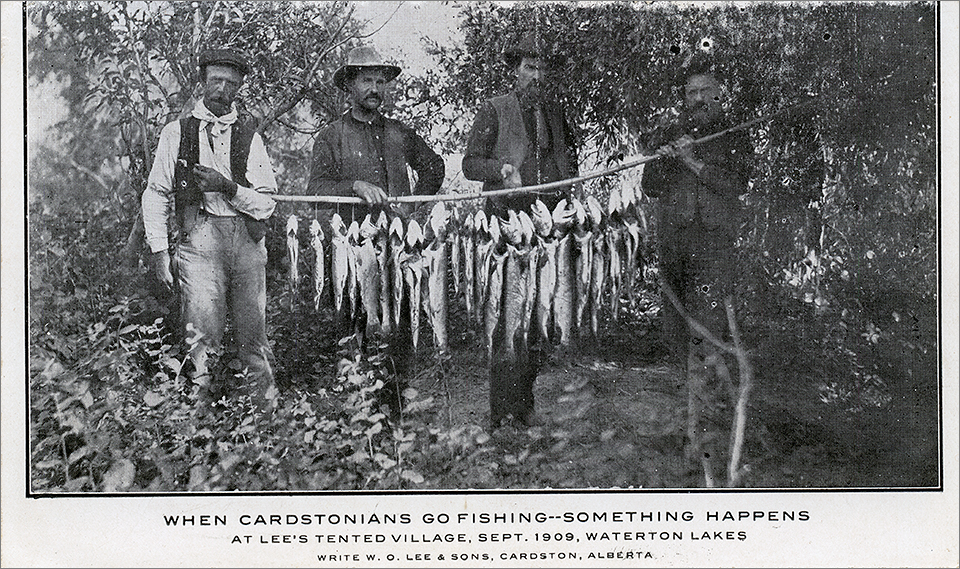
Waterton Lakes was one of the first places in southern Alberta to become a tourist attraction. Outdoor enthusiasts, including anglers, were visiting the area even before it became established as a park (Kootenay Lakes Forest Reserve), in 1895. The deep, cold mountain lakes and crystal-clear streams teemed with trout, eager to take a fly or lure.
Kootenai Brown – Adventurer Extraordinaire
Perhaps the best-known resident, and angler, living at Waterton Lakes during the 1880s was frontiersman, John George “Kootenai” Brown. Born in Ireland in 1839, Brown came to Canada in 1862, after serving briefly in India as an ensign in the British Army’s Eighth Regiment of Foot. Upon his arrival in Victoria, British Columbia, Brown prospected in the Cariboo gold-field for several years, before serving as a constable at Wild Horse Creek. By the summer of 1865, he was once again prospecting for gold, eventually making his way to Kootenay (Waterton) Lakes, in what is now southwest Alberta. Brown’s visit to the lakes had a profound effect on him and he vowed to return here one day to live, saying, “This is what I have seen in my dreams; this is the country for me.”
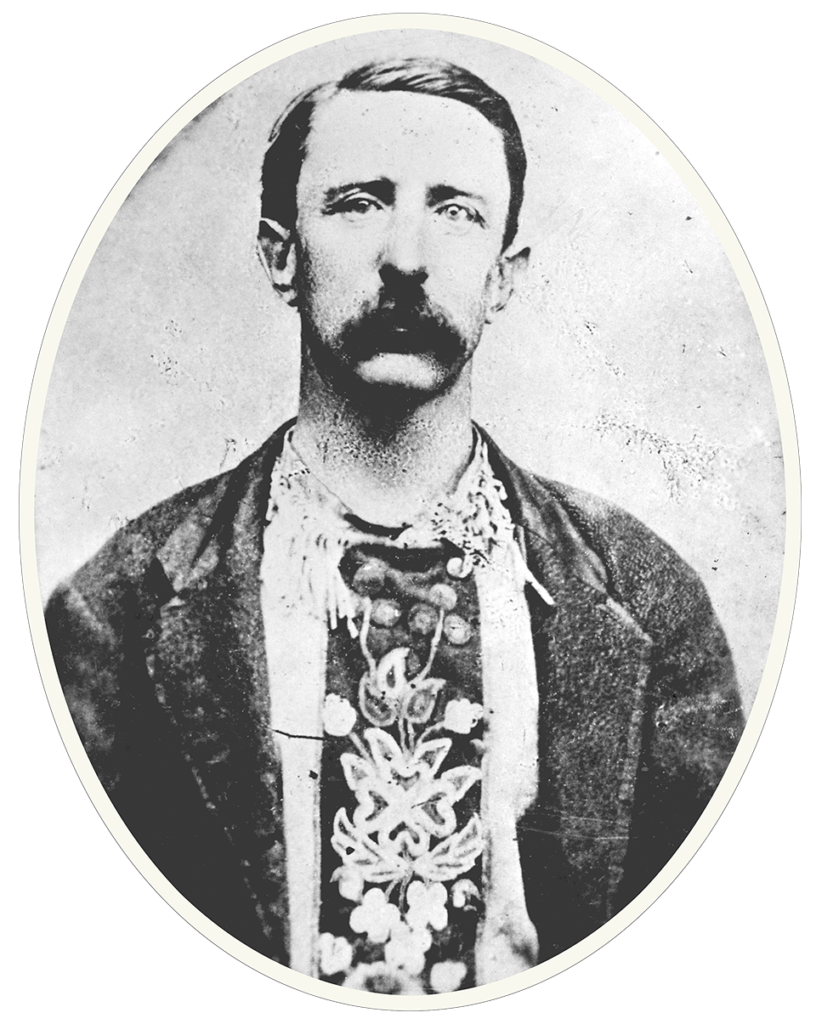
Glenbow NA-1315-28
Brown moved on to Duck Lake, Saskatchewan and then Portage la Prairie, Manitoba, where he became a whisky trader. In the summer of 1867, he took a job with a pony express company, carrying mail for the United States Army in the Dakota Territory. The company went bankrupt and the following spring (1868) the army hired Brown to serve as a carrier, guide, and interpreter. Four weeks later, while carrying despatches and mail, he was captured by Sioux chieftain, Sitting Bull, and his warriors, but managed to escape with his life.
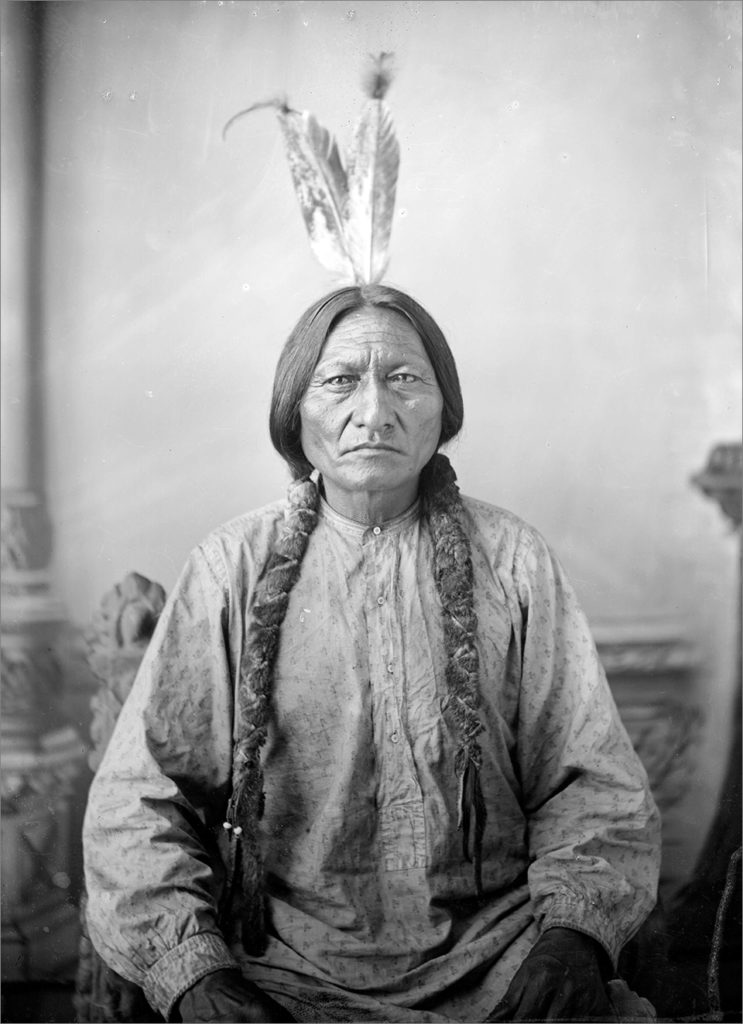
Brown continued to work for the U.S. Army until 1874. Afterwards, he went on to take part in some of the last buffalo hunts on the western prairies, then took up the life of a wolfer and trader.
In May 1877, Brown killed a man in a quarrel over an alleged debt and was jailed at Fort Benton, Montana. In November, he was put on trial for murder at Helena, the territorial capital, and was acquitted, then released. The trial and acquittal marked a turning point in Brown’s life. At 38 years of age, after spending six months in prison, he was a free man. Brown would go on to make the most of his newly gained freedom.
The Call of the Mountains
John George Brown returned to Canada and settled with his wife, Olivia, and their two daughters, in a cabin at Kootenay (Waterton) Lakes. He opened a trading post, which also served as headquarters for his guiding expeditions. To sustain his family, he hunted, fished, and earned money by guiding some of the early tourists visiting the area.
The September 23, 1882 issue of the Fort MacLeod Gazette contained a lengthy article on “Kootenai Lakes,” where it reported favorably of J.G. Brown’s ability as a fishing guide, saying, “There is a boat on the lake and horses can be procured from the guide, Mr. Brown. For trolling and fly-fishing there is abundant tackle and all the necessary requisites, and parties visiting his place are always sure of their fish, as Mr. Brown can catch them where all others fail.”
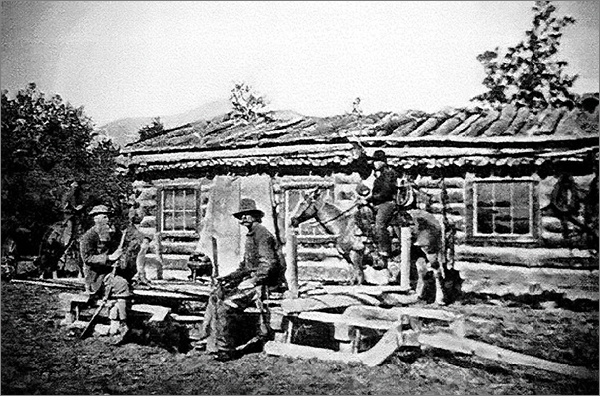
Guiding Cattle Barons
Among Brown’s guests in 1883 were the 1st Earl of Lathom and Alexander Staveley Hill, a prominent lawyer and Member of the British Parliament. Both men were shareholders in the Oxley Ranche Company, north of Fort Macleod.
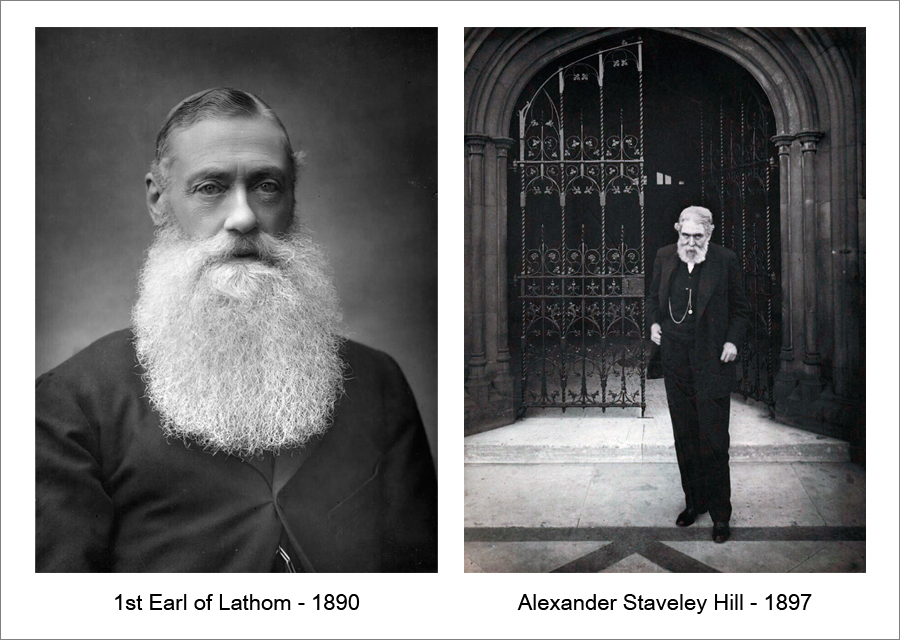
Alexander Staveley Hill was also a traveler and author. In his 1885 book, From Home to Home: Autumn Wanderings in the Northwest, in the Years 1881 – 1884, he describes in great detail his experience with Kootenai Brown. By this time, John George Brown was known throughout the region as “Kootenai Brown.” He would carry this name until the end of his life.
While sitting around a campfire at Brown’s cabin along Lower Kootenay Lake, Hill and the Earl of Lathom arranged a two-day trip in the mountains, with one day of fishing, at a rate of five dollars a day. One of the places Kootenai Brown guided his British clients was Cameron Falls, where Hill took photographs and the earl caught a small trout. In Hill’s book, he describes Cameron Falls as one of the prettiest waterfalls he had ever seen.
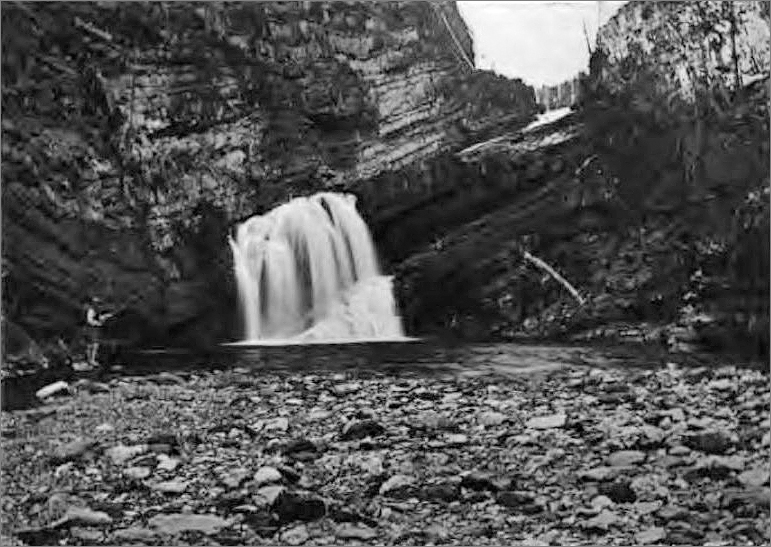
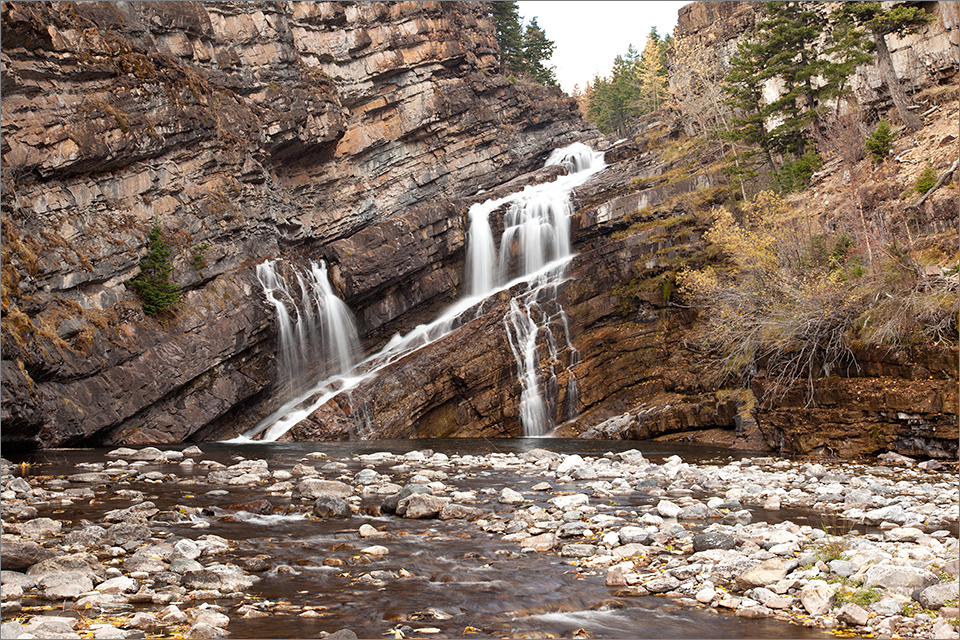
Over the years, Kootenai Brown would periodically visit Fort Macleod, making the 80-kilometre (50-mile) trip on horseback or by wagon. Sometimes, he would bring a load of freshly-caught fish to sell or barter in town. On one occasion, he delivered 300 pounds of whitefish and according to the local newspaper, the Fort MacLeod Gazette, he had “little difficulty in disposing of them.” Another time, he came to town with a 30-pound lake trout.
Packer & Scout
Kootenai Brown would also work as a packer and guide for the North-West Mounted Police. During the North-West rebellion in 1885, Brown served as Chief Scout with the Rocky Mountain Rangers. In 1897, he was employed as a packer for a company servicing the Canadian Pacific Railway when it pushed its way through Crowsnest Pass.
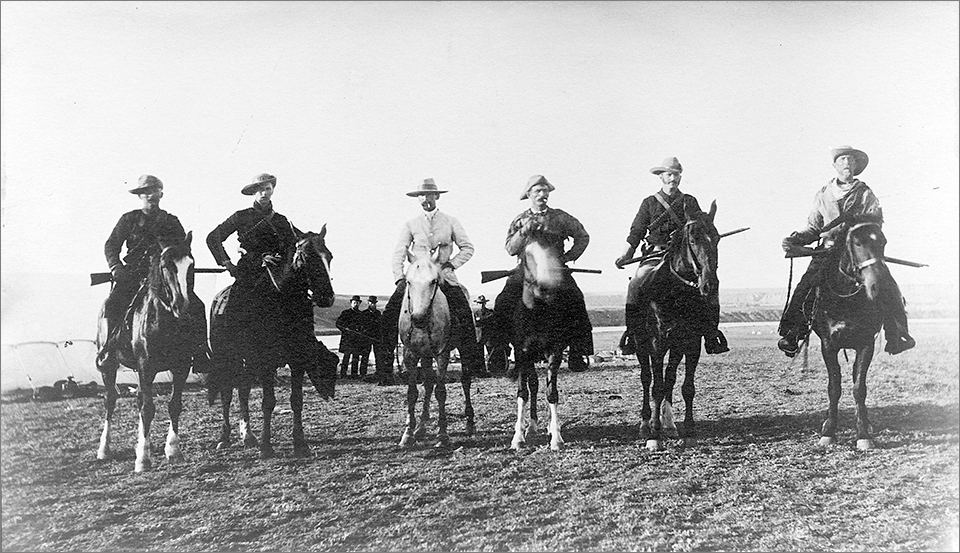
John George “Kootenai” Brown on the far right
Courtesy the Galt Museum & Archives 19760217095
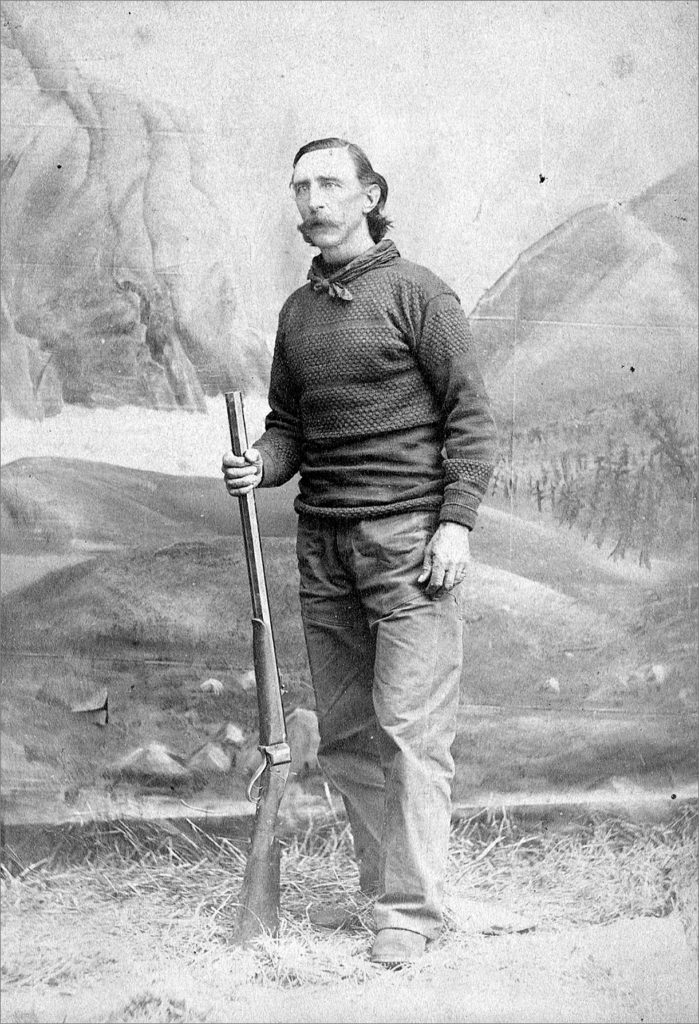
Courtesy the Galt Museum & Archives 19770160000
Park Official
In 1901, Brown was appointed fishery officer for Kootenay Lakes Forest Reserve. In 1910, at age 70, he became the park’s first Superintendent, a position he held until August 1914. John George “Kootenai” Brown died on July 18, 1916, and was buried along the western shore of Lower Waterton Lake, near the site of his first homestead.
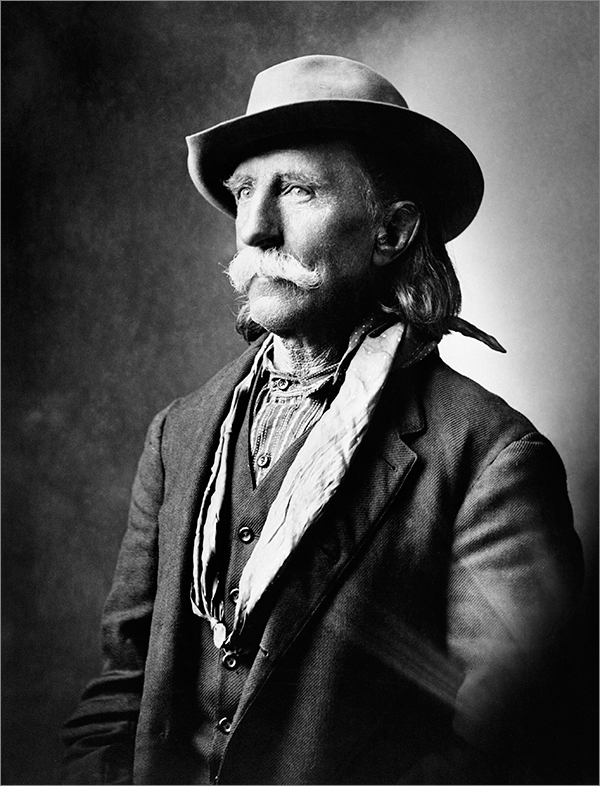
Glenbow NA-678-1
In 1909, the name Kootenay Lake Forest Reserve was changed to Kootenay Lake Forest Park. In 1911, it was officially renamed Waterton Lakes National Park. In 1932, Waterton Lakes National Park and adjoining Glacier National Park in Montana became the first International Peace Park in the world.
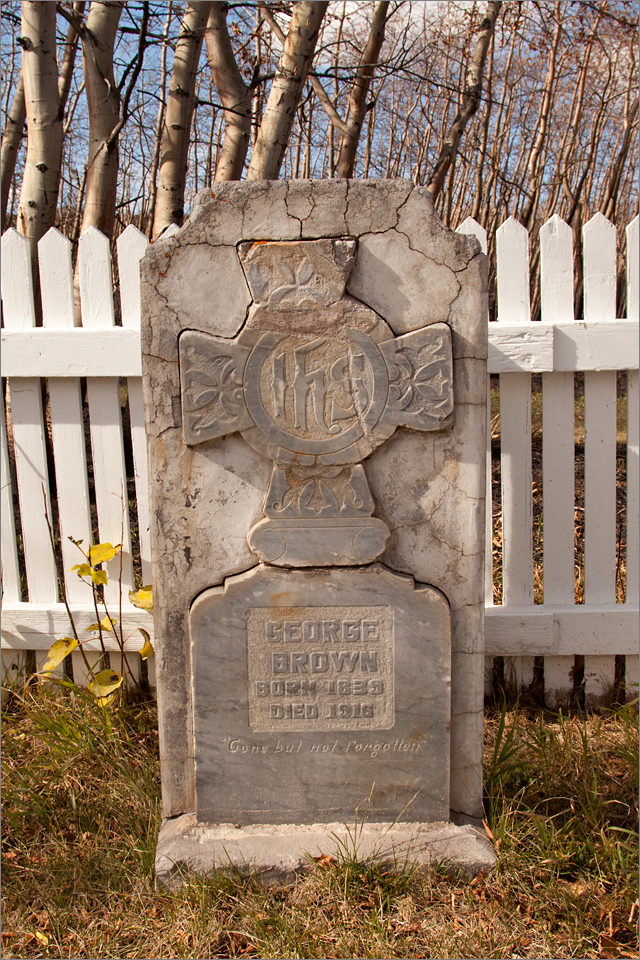
Lee’s Tented Village
In 1910, approximately 2,000 tourists visited Waterton Lakes. Some of these visitors would have stayed at Lee’s Tented Village, operated by W.O. (William Orme) Lee & Sons of Cardston. W.O. Lee also owned a livery, an undertaking business, and a tent manufacturing company in Cardston. In 1908, he set up two tent camps, one at Waterton Mills by Maskinonge Lake, and another at Linnet Lake, to accommodate the ever-increasing number of tourists coming to the park. The company provided fully-equipped tents, along with rowboats for fishing.
The Lees promoted their tent camps through newspaper advertisements, circulars, and postcards. Following W.O. Lee’s death in 1911, his business in Waterton Park was taken over by Christian F. Jensen Jr. and his brothers, Enoch and Joseph, of Aetna, Alberta.
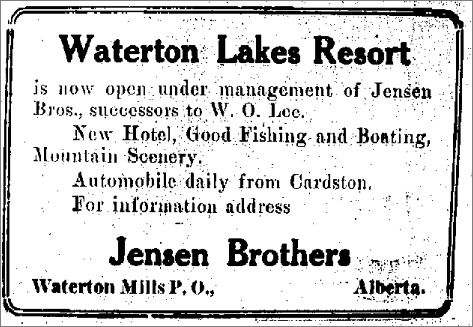
Lethbridge Daily Herald – August 3, 1911
Southern Alberta’s Beauty Spot
The February 27, 1909 issue of the Lethbridge Daily Herald featured an article on Waterton Lakes by writer, D.H. Elton, extolling the park’s attractions – its magnificent mountain peaks and scenery, the abundant wildlife, and the excellent fishing that was available. Of the fishing, Elton writes, “Every stream that flows into the lake furnishes its quota of mountain trout – those speckled beauties that delight and sometimes torment the specialist with the ‘fly hook.’ ”
Elton goes on to describe the best way to catch lake trout, saying, “Trolling in a row boat with a spoon hook is the method employed in catching the lake trout and they are often so large that it becomes necessary to row to shore and drag the finny fellows up the pebbly beach out of their native element.”
Other Angling Entrepreneurs
In 1909, Bert Riggall and John “Jack” Hazzard opened a similar operation as Lee’s Tented Village on Upper Waterton Lake, where today’s townsite is located. They offered tent accommodation, meals, and boat rentals. The Riggall – Hazzard partnership lasted one year, and in 1910, Riggall and his new partner, James Cyril Watmough, started another tent camp nearby, where Cameron Creek enters the lake. They built four rowboats and rented them to guests. The fishing was very productive and advertised as, “a fish a minute.”
In 1911, Jack Hazzard opened a hotel in Waterton, catering to anglers and other tourists visiting the park. Rates at the Hazzard Hotel in 1918 were advertised at $2.50 per day.
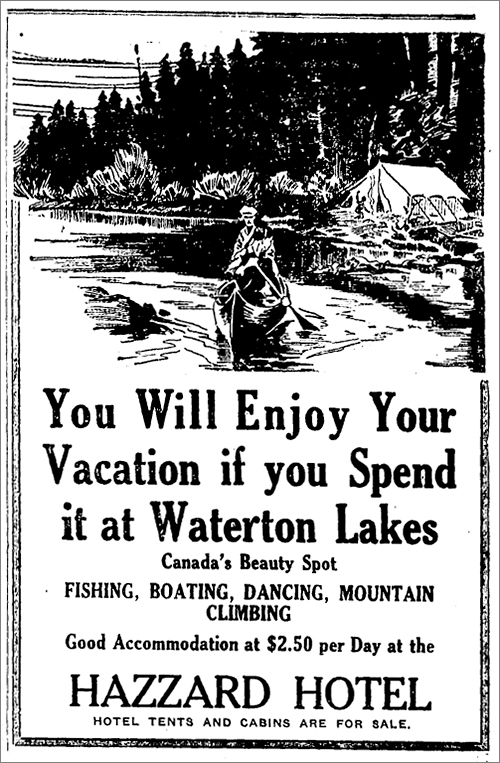
Lethbridge Daily Herald – July 13, 1918
During the summer of 1916, Cal Hunter and Harry C. Lee, son of the late W.O. Lee of Lee’s Tented Village fame, were operating their own summer tent village in the park. Lee had also leased the Gertrude, a 30-metre-long (100-foot) steam paddle wheeler, moored at Emerald Bay. The steamboat was built in 1907 at Maskinonge Lake to serve a sawmill that was located there. For a brief time, the boat had also been used for sightseeing excursions on Waterton Lakes. Lee and Hunter would convert the boat into a floating restaurant and tea room.
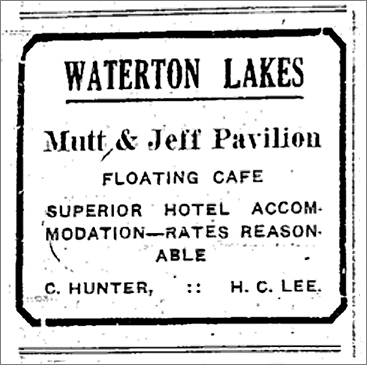
Lethbridge Daily Herald – July 27, 1916
By the following summer (1917), it appears Harry C. Lee was the sole proprietor of the tent camp and cabin rentals. He also rented boats and sold fishing tackle.
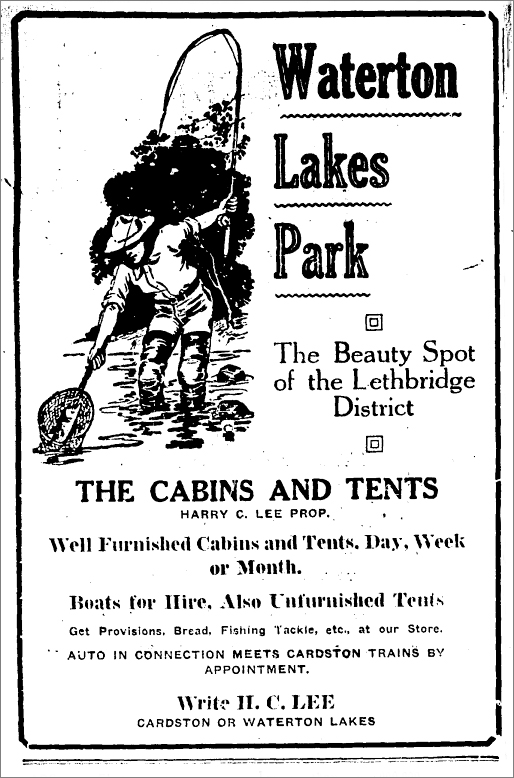
Lethbridge Daily Herald – August 11, 1917
In 1918, the Gertrude was scuttled in the bay, where it remains to this day. In November 1918, Harry C. Lee contracted the Spanish flu and died. His wife, Emily, would continue to operate the family’s cabin rental business in Waterton Park for a number of years.
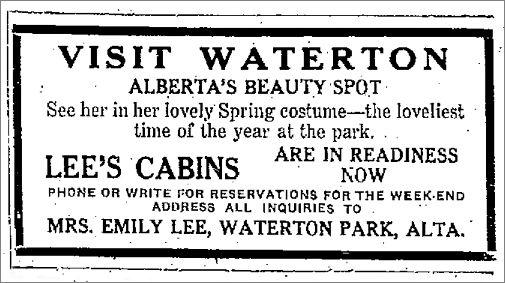
Lethbridge Herald – June 2, 1924
On July 8, 1920, Mrs. Elenora Hunter (Cal Hunter’s wife) caught the biggest lake trout ever taken from Waterton Lakes. The fish weighed 23.4 kg (51 lb. – 2 oz.) and was caught at the narrows between Upper Waterton and Middle Waterton Lake. Elenora was using a 16-foot bamboo pole with 15 feet of line. In 1929, the Hunters opened a summer tent camp, restaurant, and rowboat rental operation at Cameron Lake. Brook and rainbow trout had been introduced to this lake several years prior.
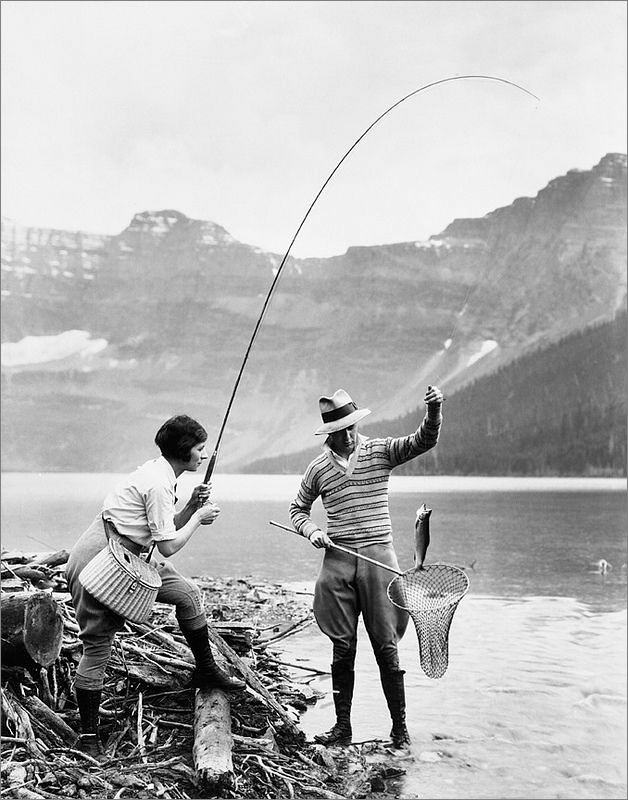
Photo by W.J. (William John) Oliver appeared in
the 1930 Pocket Guide to Waterton Lakes National Park
Glenbow NA-4868-139
During the mid-1920s, the Morris Brothers, and other outfitters such as Jack Bevan, were providing trail rides in the park and advertising fishing trips.
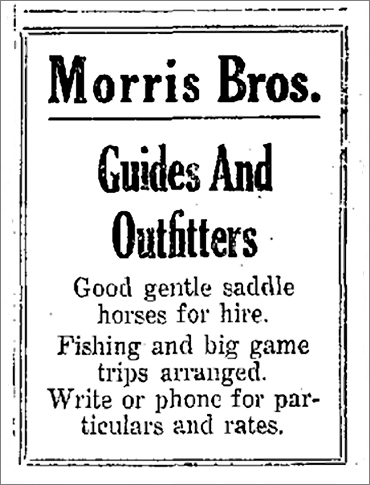
Lethbridge Herald – July 17, 1925
Stocking Trout
The first fish stocking in the park occurred in 1922 when 30,000 eastern brook trout were delivered from a Bozeman, Montana hatchery, and planted at the headwaters of Waterton Lakes. Over the next few years, other lakes and streams would be stocked with brook and rainbow trout.
A fish hatchery was built in Waterton Park in 1928 and the first hatchlings (82,000) from the facility were transplanted in the park’s waters in September 1929. The following year, approximately 1.4 million fry and fingerlings from the hatchery were planted in 74 different creeks, rivers, and in 13 lakes, from the international boundary, north to Claresholm, and west to the Livingstone Gap. The hatchery remained in operation until 1960.
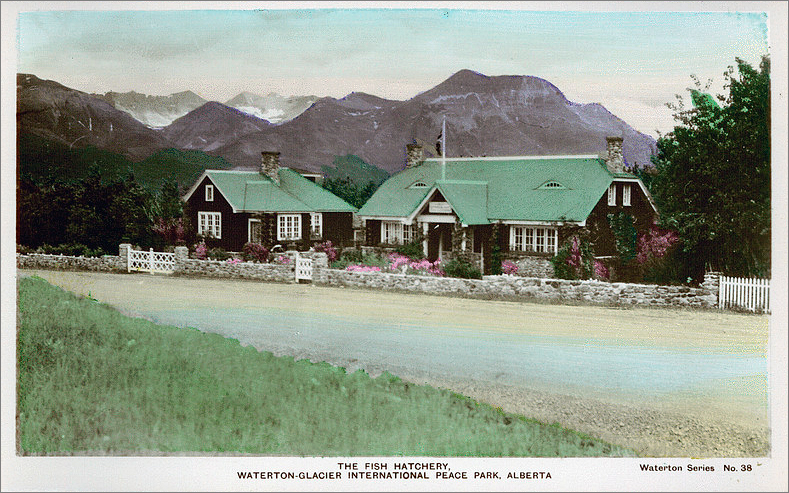
Prince of Wales Hotel
Waterton Park and the surrounding area would attract anglers for decades to come. Improvements to roads leading to the park in the 1920s, and the popularity of automobiles as a mode of transportation, brought even more visitors to Waterton.
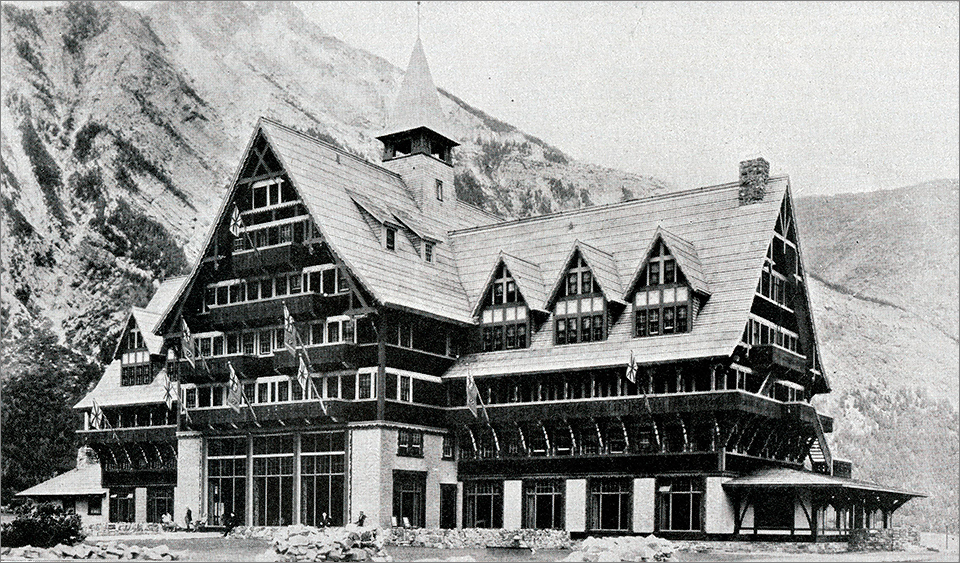
The opening of the Prince of Wales Hotel in 1927 marked the beginning of a new era in Waterton Park. Built by the Great Northern Railway company, based in St. Paul, Minnesota, the luxury hotel would draw international attention to the park and become its most recognized landmark.
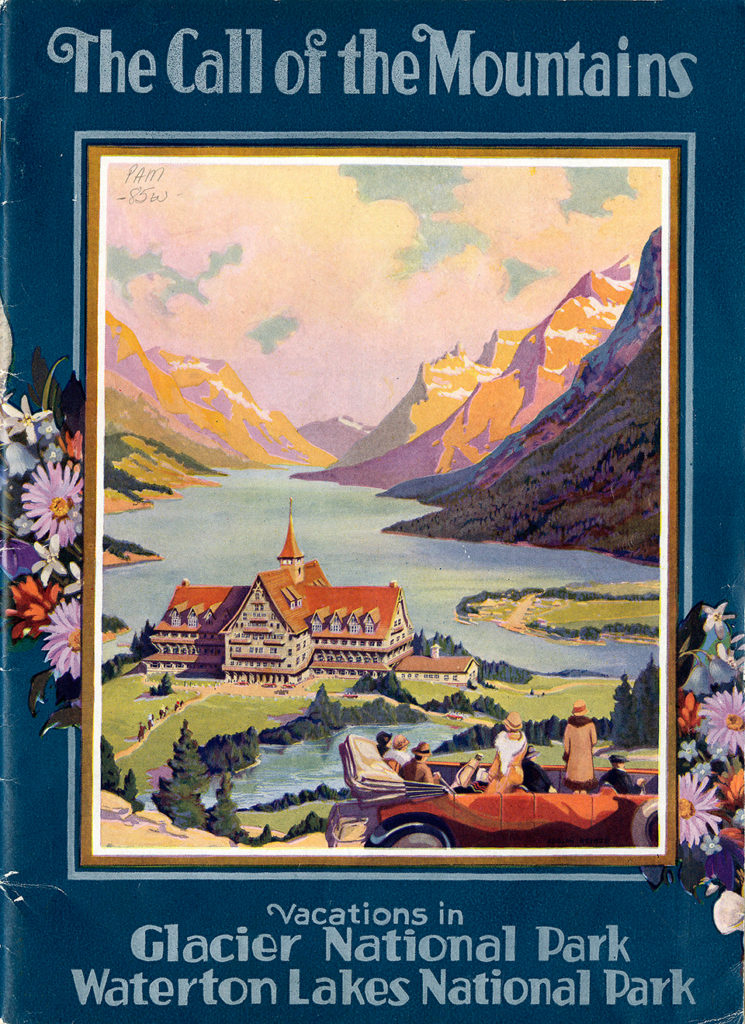
The railway company promoted Glacier and Waterton Lakes National Parks through numerous posters, brochures, and maps. In 1927, they published a 48-page brochure, The Call of the Mountains: Vacations in Glacier National Park – Waterton Lakes National Park, featuring an artist’s illustration of the Prince of Wales Hotel on the cover.
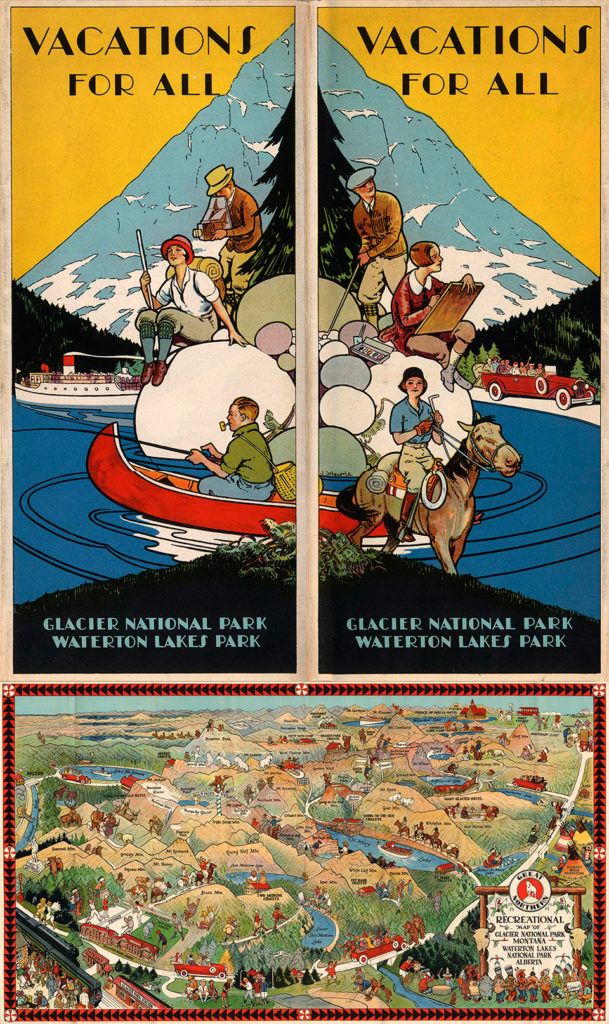
Glacier & Waterton National Parks – ca. 1930s
(click image of map for larger view)
Final Thoughts
The Prince of Wales Hotel was one of the places I visited with my family during our first trip to Waterton Park, around 1965. I don’t recall going inside the hotel, but remember my father taking our picture outside. On subsequent visits, we would always stop at the outdoor fish rearing ponds near Cameron Falls, where I would toss ants, beetles, and any other bugs I could find crawling on the ground, into the ponds. The trout would go crazy for them.
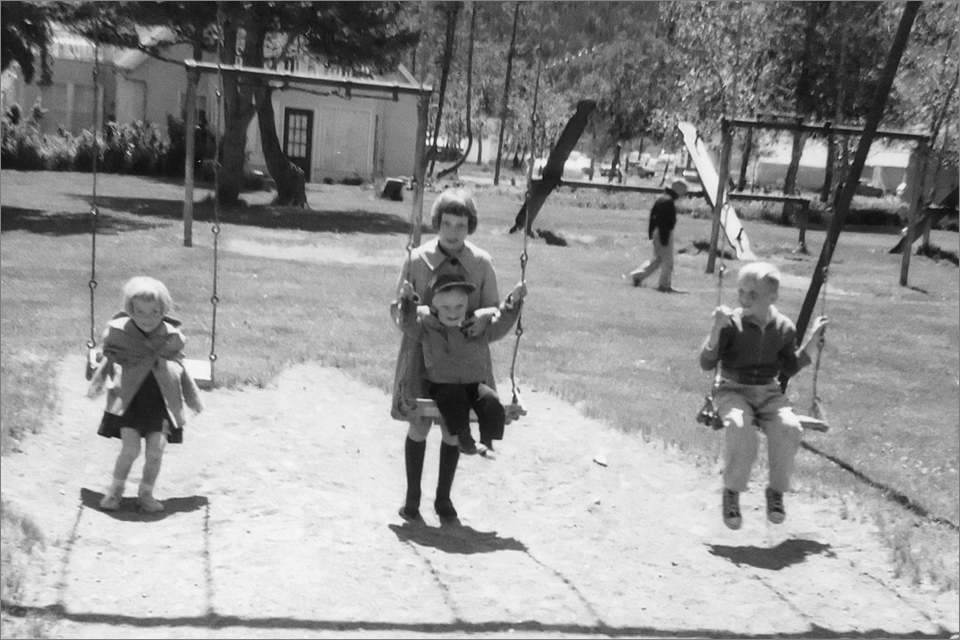
Waterton Park was the first place I would go fishing, upon receiving a fly rod and reel from my parents. It was during the summer of 1972 and our family was camping in the park. My father drove me to Cameron Falls, so I could try out my new fly-fishing equipment. I scrambled down to the creek and started casting into the deep pool at the base of the falls, in hopes of catching a trout for supper.
I was new to fly-fishing and my casting technique left a lot to be desired. Despite my best effort, the only thing I managed to catch that day was myself, when an errant cast resulted in the fly becoming embedded above my eyebrow. It occurred in plain view of a group of tourists who were observing and taking pictures from the bridge behind me. Hoping no one had noticed what happened, I reached up and nonchalantly plucked the fly, with its barbed hook, from my forehead, then returned to camp with my father.
At the time, I knew little of the park’s long and rich fishing history, let alone anything of Kootenai Brown, Bert Riggall, and others, who were among the first to cast a line in its waters. That knowledge would come, in time. Meanwhile, I, too, was listening to the call of the mountains.
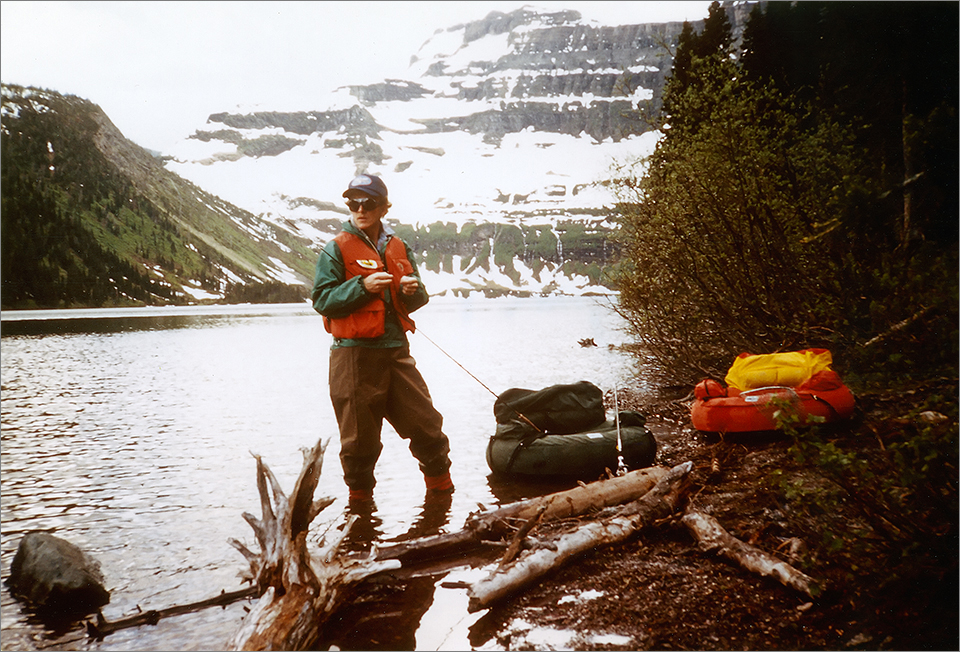
You can download a pdf copy of this article here or by clicking the image below.
Article References & Credits
Kootenai Brown: His Life and Times, 1839-1916 by William Rodney
Prairie Grass to Mountain Pass: History of the Pioneers of Pincher Creek and District by the Pincher Creek Historical Society
High on a Windy Hill: The Story of the Prince of Wales Hotel by Ray Djuff
Bert Riggall’s Greater Waterton: A Conservation Legacy (Beth Towe, Editor)
Online Resources
Parks Canada – Waterton Lakes National Park
National Park Service – Glacier National Park, Montana
From Home to Home: Autumn Wanderings in the Northwest, in the Years 1881, 1882, 1883, 1884 by Alexander Staveley Hill
A History of Canada’s National Parks by W.F. Lothian
Where the Mountains Meet the Prairies: A History of Waterton Lakes National Park by Graham A. MacDonald
Fish Hatchery & Rearing Ponds in Waterton by Chris Morrison
Horse Stables in Waterton by Chris Morrison
Waterton-Glacier Views
Hazzard: A Jack of All Trades by Frank Goble (July 16, 1997)
How the Mighty Have Sunk by Shari Narine (August 26, 1998)
The Boundary
Sunken Treasure by Kathy Taylor (July 19, 2005)
Waterton’s Titanic: The Wreck of the Gertrude
by Benjamin Freeland (August 15, 2008)
Digital Newspaper Archives (Fort MacLeod Gazette, Lethbridge Daily Herald)
Manitoba Historical Society – Kootenai Brown in the Red River Valley
Dictionary of Canadian Biography – John George “Kootenai” Brown
Internet Archive Digital Library
Archives Canada
Photos
Glenbow Museum Archives:
John George “Kootenai” Brown NA-1315-28
John George “Kootenai” Brown NA-678-1
Catching a fish at Cameron Lake NA-4868-139
Galt Museum & Archives:
Mountain Rangers at Medicine Hat, AB – 1885
Studio portrait of John George “Kootenai” Brown – 1890
National Portrait Gallery – London:
Edward Bootle-Wilbraham, 1st Earl of Lathom
Alexander Staveley Hill
From Home to Home – Alexander Staveley Hill:
Kootenai Brown cabin – 1883
Cameron Falls – 1883
Wikimedia Commons:
Sitting Bull cabinet card by photographer, David F. Barry
Bismark, Dakota Territory – ca. 1883
Montana Memory Project:
Call of the Mountains – brochure cover (Great Northern Railway – 1927)
Prince of Wales Hotel (Call of the Mountains brochure – 1927)
Vacations for All – pamphlet and map (Great Northern Railway – ca. 1930s)
Postcards:
Lees Tented Village – VB Collection
Waterton Park Fish Hatchery – Peel’s Prairie Provinces
photo by Joseph Frederick Spalding – The Camera Products Company

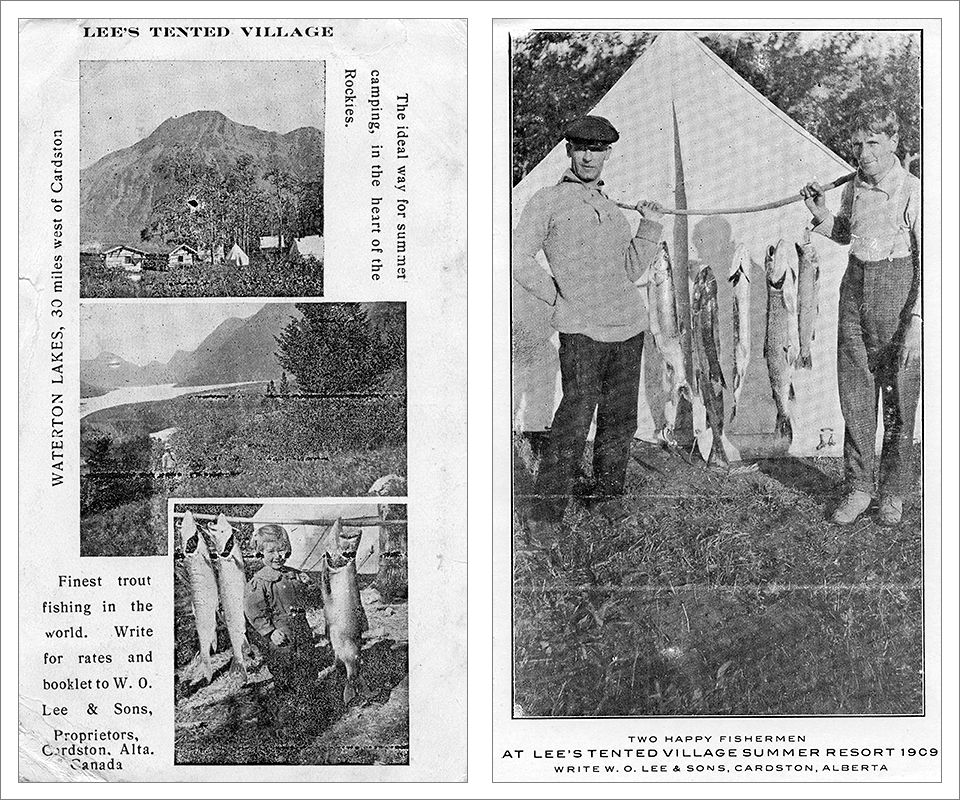

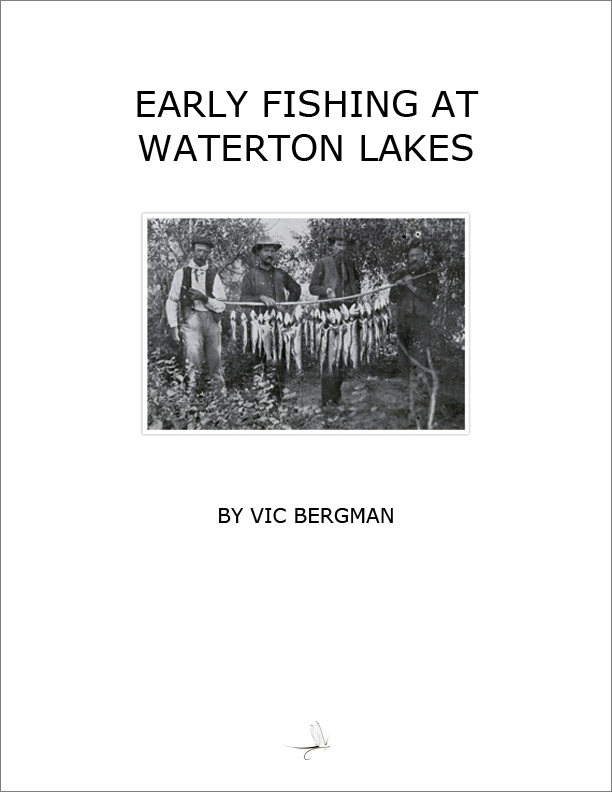
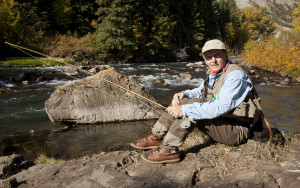
21 Comments
Thank you so much for posting this article. My great great grandfather was W.O. Lee. I wanted to see if I could find any information about my great grandmother, Emily C Lee, in Watertown, after her husband, Harry C Lee, died of the Spanish flu in 1918. When I googled my grandmother’s name, your article came up. I was thrilled to find some of my family history, recorded in your article. Thank you very much, for sharing this with us. I will forward it, to the rest of my family.
Hi Lin,
I’m glad you found my blog. I’m happy to have posted the article about Waterton which included info on your great great grandfather! Thanks for commenting!
Hello, I have been researching and reading any article to do with the Waterton Fish Hatchery/Ponds as my grandparent, William (Bill) Cable, worked at the Hatchery during the late 20’s – 1930s.
My grandparents and father, Billy Jr., lived in the house on the Hatchery Grounds.
There is very little info on the Hatchery, thus I want to thank all involved in writing this article.
KC
Hi Kathleen,
If you contact Edwin Knox at Parks Canada in Waterton, he may have more information on the hatchery. Edwin has been working on an oral history project for Waterton Park, where he has been gathering information on people who lived and worked in the park. If your grandparents and father worked and lived at the hatchery, I’m sure Edwin would be happy to hear from you. I will send you a PM with Edwin’s contact details. I’m glad you enjoyed the article. Thanks for commenting!
Great article. My wife’s grandfather, Delance Strate helped prepare Kootenai Brown’s body for burial. Her family still has a cabin in Waterton. The mountain beauty of the Park never gets old. I’ve seen pictures of long strings of fish from Belly River fishing trips in the early days. My sons and I have fly fished in the Pass with Leland Kirk. Great times!
Hi Grant,
I’m glad you liked the article. That’s very interesting information about your wife’s grandfather. Waterton Park is a beautiful place, that’s for sure! Leland is an excellent fly-fishing guide. He’s been guiding for our shop a long time, more than 25 years! Thanks for commenting.
Hi Vic,
I really enjoyed your article. I have lots of memories of Waterton starting in 1963 when I saw the Park for the first time. Having been lucky enough to snag a summer job with Parks Canada after my first year of university I took the Grey Hound from Edmonton to Pincher Creek and stayed overnight in the King Edward Hotel which sadly burned down this year. The next morning the Park Engineer picked me up and we made the scenic drive from Pincher to the park. Three of us engineering students were bunked in a little cabin on the shore of the Upper Lake and had our meals at the government compound at the base of Crandall Mountain.
What a summer it was. We hiked every trail in the park and I remember fishing Alderson Lake, Bertha Lake, Crypt Lake and many others. One of our projects involved the Crandall Mountain Campground which was being built at the time. This included work on a log bridge over the Blackiston River. Sadly my one and only bridge project was destroyed the next spring in the horrendous 1964 flood.
All these early memories drew me back to Waterton over the years and my family and I made many wonderful camping trips to the park. Thanks for a great article.
Terry
Hi Terry,
I’m glad you enjoyed the article. I remember you telling me about your summer job in Waterton Park. It must have been a great experience. I’m sure you remember the trout rearing ponds. This was my favorite place to visit in the park. One of the places I liked fishing was Cameron Creek. The brookies and rainbows were not very big but fun to catch. Thanks for stopping by and for sharing your stories.
Great post Vic, you did lots of research. I did not know that some of my ancestors were one of the first guide camps in the park. We are living in different times, these days. Now we now where the probable naming of Lees Creek came from. Be safe and let’s get out fishing …… I’ve got a spot.
Hi Don,
I’m glad you enjoyed the post. I really enjoyed doing the research on Waterton Park and of its early anglers and guides. There is a fair amount of info available online but you have to do some digging. While working on this, I wondered whether you might be related to the Jensen family, who were among the first to operate a guide camp in the park. They were the first to build a wood structure hotel there. Your passion for fishing and the outdoors has deep roots.
Yes, we are living in different times. The pandemic we are currently facing is similar to the one that occurred in the late 1910s. In 1918, the Spanish flu claimed the life of Harry C. Lee, whose family opened the first tent camp in Waterton. While researching the Lee family, I read that Harry, who also operated an undertaking business in Cardston, reportedly contracted the flu on the return trip from the cemetery, after the burial of a man. It was very cold outside and he had offered his coat to the man’s wife, who was riding in his horse-drawn hearse. I found that very poignant, in light of what’s going on today.
Hopefully, things will improve for us soon and that we will be able to visit our favorite fishing spots. In the meantime, I hope you and your family stay safe and well. Thanks for commenting. I appreciate it!
Vic: What a great historical post. You did a lot of research!!! Old time photo selection also wonderful. K. Brown lived quite the life!! Hope you are doing well and that The Fly Shop can open this summer.
bob
Hi Bob,
I worked on this post for a while. Lots of reading and researching online. I seem to have some time on my hands these days. Kootenai Brown was an interesting person all right. He was probably the first fishing guide working in southwest Alberta. You wonder what he would think about the guiding industry today.
We are doing well. Hopefully, things will improve in time for summer. Thanks for commenting. Take care.
Hi Vic,
Great article on Early Fishing at Waterton Lakes. Our parents would always drive to Waterton on a sunny Sunday morning. Waterton gave me some of my fondest memories growing up in Southern Alberta. I work at the Galt Museum and we did a display on Art Baalim. Art was a huge Waterton fisherman and had a beautiful Chris-Craft wooden speed boat he would fish off of. The display had his bamboo fly rods and some of his spinning rods. He used giant flashers and downriggers to catch big lake trout.
Hi Brad,
I’m glad you enjoyed the article. I’m sure Waterton holds a lot of special memories for many, many anglers, and others. Growing up in Coaldale, our family made regular weekend trips to Waterton, too. I wasn’t aware the museum did a display on Art Baalim. I would have loved to have seen some of his things. It would have been pretty neat seeing a Chris-Craft boat on Waterton lake. I used to head up to Cameron Lake and rent a rowboat or use my float tube. Not as fancy as what Mr. Baalim would have used, but they worked. Thanks for commenting.
Hi Brad,
Thanks for posting this. I am Art Baalim’s Great-Grandson. I learned to fish in that very same boat as a youngster in the early 90’s. The boat was named the Cecily & has been on the Waterton Lakes since 1927. It has been out of the water for a number of years, but we are hoping to get it repaired and back on the lake sometime soon. It has proven very difficult to find a shipwright that has the expertise to repair such an ancient piece of equipment.
Thanks for this article Vic, it was a great read for someone deep in the lore of Waterton fishing history, hah! My Great-Grandfather still has the 2nd largest catch on record (49.5lbs), behind Mrs. Cal Hunter who caught a 51 pounder at the narrows. Long ago my Great-Grandfather’s catch was mounted & displayed up behind the PW front desk. We would love to know where it ended up but it has remained a mystery.
Hi Liam,
I’m glad you liked the post. It would be great if you could get the Cecily on the water again. I’m sure it has a lot of history. The top two record lake trout catches for Waterton are probably safe, but who knows, maybe you will be able to break the record, once you get the boat going. It would be interesting to find out what happened to your great-grandfather’s fish. Too bad it’s not on display somewhere. Thanks for commenting.
Great article Vic. Spending my first seven years in Alberta right at the doorstep to Waterton, I can sure understand your draw to its captivating magic. Oh, to know fishing like that back then. This will tie me over for another day or two but my rods are starting to vibrate in their cases!
Hi Bob,
I’m sure the fishing in Waterton was spectacular back in those days. I knew you had once lived just outside the park. Near Crooked Creek, if I remember correctly. I can hear your fly rods vibrating from here. Or is it mine that I’m hearing? Talk to you soon.
It’s been a dream, but I’ve never had much luck in the main lakes. I don’t know if the fishing was better back then – but, it sure seems like it!
I learned to fish on my Great-Grandpa’s boat on the Upper Lake in the 90’s, but I never caught a thing. I actually caught my first fish, a 1-2lb rainbow, in a canoe at Cameron Lake.
Thanks again for the article – a lot of Waterton’s history is not recorded and will only get lost. I love listening to my Dad and his friends tell stories about what it was like in the 50’s. So much has changed, but the town is still so much the same and familiar. It’s a unique and special place.
Records like this, and the work Edwin Knox does, is priceless, just wanted to extend my thanks.
Dear Vic,
Enjoyed the interplay between the current and historical in your last two posts. Thank you so much for brightening our days with your wonderful exposes and photographs. May the spring thaw find you and Carol in good health and spirits.
Sincerely,
Sam
Hi Sam,
It’s nice to hear from you. I’m glad you enjoyed the last two posts. With the fishing and tourist season just around the corner, I had planned to post the Waterton Lakes article earlier but delayed it, due to what’s happening with all the closures. I’m not sure when Waterton Park will be able to reopen and decided to post it today, anyway. Carol and I are well and hope you are too. Thanks for commenting!